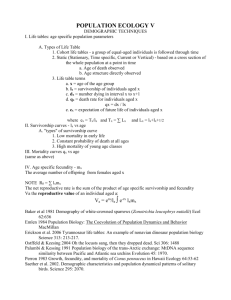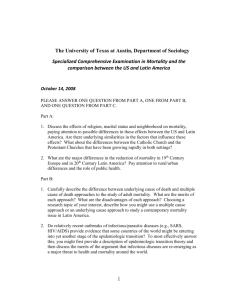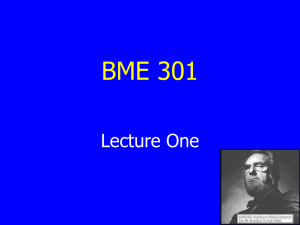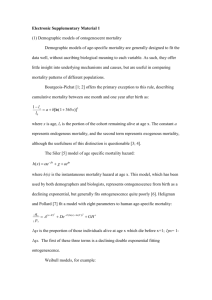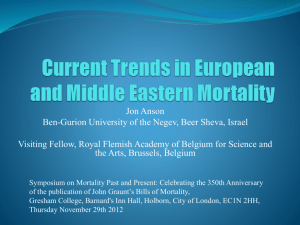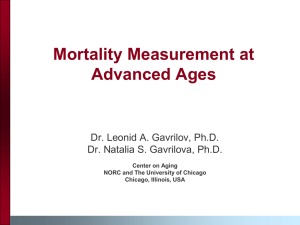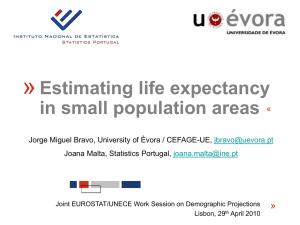Questions for assignment 1
advertisement
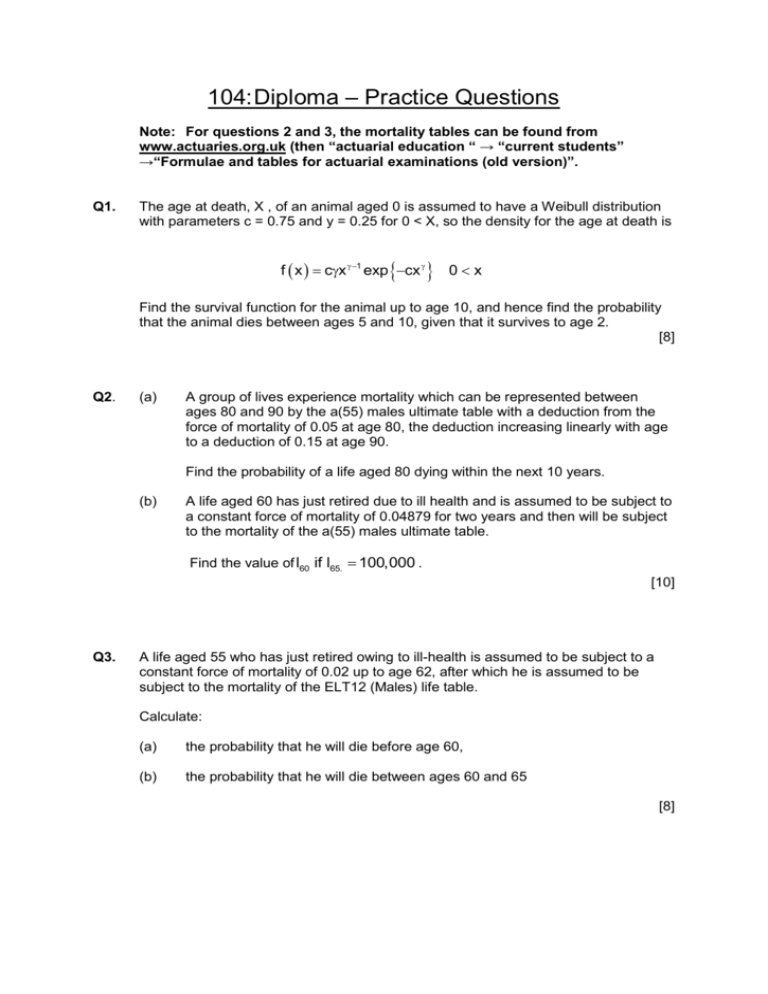
104: Diploma – Practice Questions Note: For questions 2 and 3, the mortality tables can be found from www.actuaries.org.uk (then “actuarial education “ → “current students” →“Formulae and tables for actuarial examinations (old version)”. Q1. The age at death, X , of an animal aged 0 is assumed to have a Weibull distribution with parameters c = 0.75 and y = 0.25 for 0 < X, so the density for the age at death is f x cx 1 exp cx 0x Find the survival function for the animal up to age 10, and hence find the probability that the animal dies between ages 5 and 10, given that it survives to age 2. [8] Q2. (a) A group of lives experience mortality which can be represented between ages 80 and 90 by the a(55) males ultimate table with a deduction from the force of mortality of 0.05 at age 80, the deduction increasing linearly with age to a deduction of 0.15 at age 90. Find the probability of a life aged 80 dying within the next 10 years. (b) A life aged 60 has just retired due to ill health and is assumed to be subject to a constant force of mortality of 0.04879 for two years and then will be subject to the mortality of the a(55) males ultimate table. Find the value of l60 if l65. 100,000 . [10] Q3. A life aged 55 who has just retired owing to ill-health is assumed to be subject to a constant force of mortality of 0.02 up to age 62, after which he is assumed to be subject to the mortality of the ELT12 (Males) life table. Calculate: (a) the probability that he will die before age 60, (b) the probability that he will die between ages 60 and 65 [8] Q4. The mortality in a certain aggregate life table is such that: 1 x 2 lx l0 1 100 (a) determine ( the limiting age). (b) obtain an exact expression for X. (c) obtain an exact value for q80 . [6] Q5. Assume that, for a certain life, the survival function for age x, Sx t , (t 0), is of the form: Sx t t , 0. Obtain and simplify expressions involving , and t for: (i) Fx t px (ii) n (iii) fx t (iv) x n . [7] Q6. A life table follows Makeham’s law for the force of mortality, x A B.c x . You are given that 5 p70 0.73, 5p75 0.62 and 5p80 0.50. Find A, B and c. [10] Q7. If x 3x at all ages, what is the relationship between qy and qy ? [4] Q8. A mortality table is defined so that: 1 t 2 t p x 1 for x 70, 70 x t 70 x and tp x 0 for t 70 x . Find an expression for x . [3] Q9. Given that q63 0.019 and q64 0.021, and assuming a uniform distribution of deaths between integer ages, calculate: (a) 0.4 q64 (b) 0.4 q63.6 (c) 0.3 q63.6 [5] Q10. In a certain survival model, the force of mortality between ages 61 and 62 is 0.015 and the force of mortality between ages 62 and 63 is 0.017. (a) Show that 2 p61 0.96851 [2] (b) Calculate e63, given that e61 20 [6]


